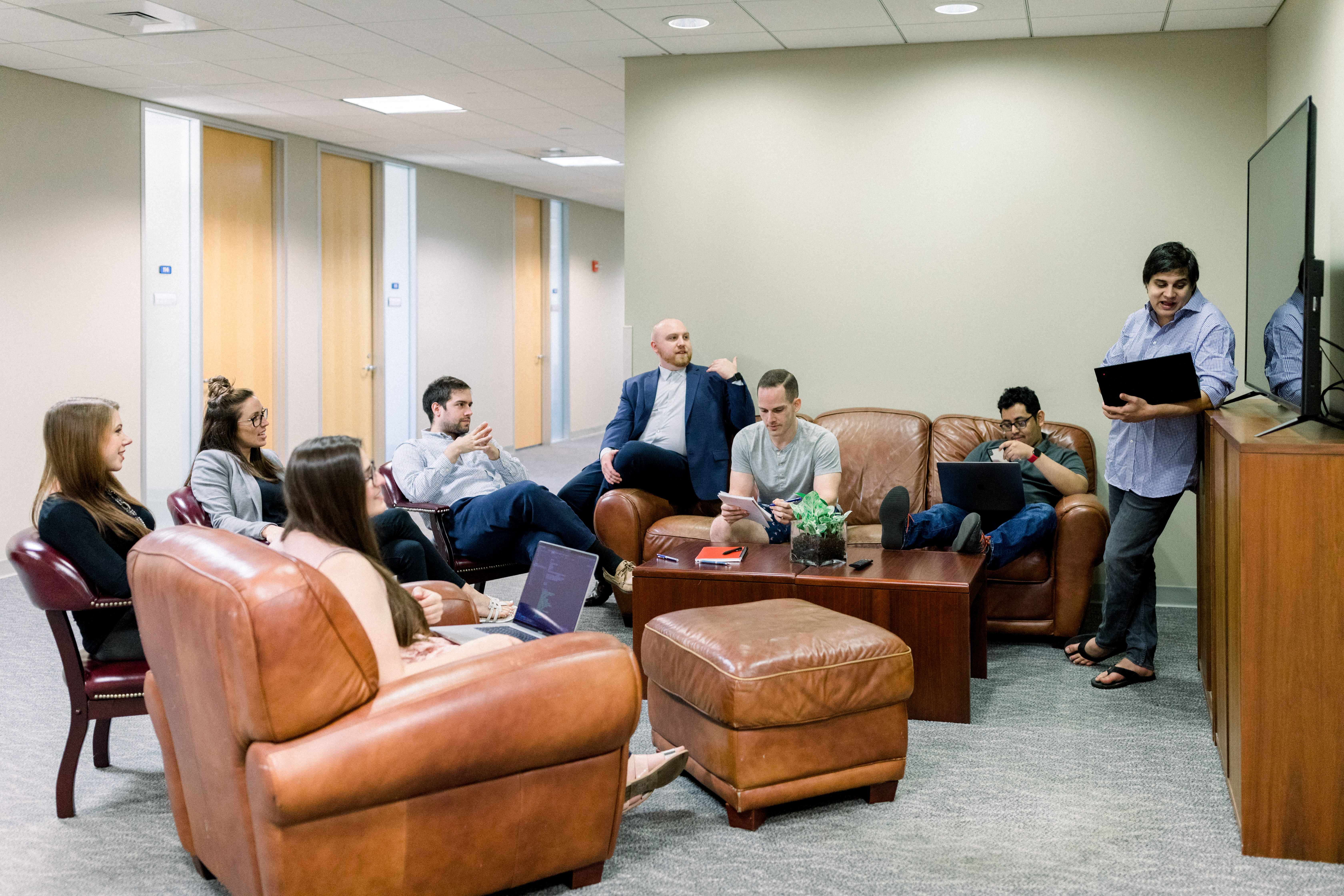To understand coworking trends in 2022, it helps to look at the industry’s most recent history. It’s come a long way since its beginning in the mid-2000s. It grew slowly, but steadily more popular in those early years. But its growth was perhaps never more impressive than in the last four years. While many industries struggle to recover in the post pandemic environment, coworking has roared to life.
In 2019, coworking spaces were tightly packed with professionals from various industries trading ideas and collaborating. Then 2020 happened. Suddenly, employees shifted to working from home, while companies ramped up their technology to make these arrangements possible.
Fast forward to 2021, and the remote and hybrid work policies that were intended to be temporary became ingrained into our work culture forever. Employers and employees alike grew wary of working from home. Thus, coworking spaces began to make a comeback as part of an emerging hybrid work model. According to Upsuite, the demand for coworking spaces grew 41% from the first quarter of 2021 to the second quarter.
What can we expect for coworking industry trends in 2022?
In 2022, coworking spaces will not only be critical to how companies operate, but the operators themselves will undergo changes that aim to address the needs of the growing population of hybrid workers.
According to the Coworking Trends Survey by deskmag.com, 75% of coworking facilities expect an increase in membership within the next three months. 60% expect higher revenues and improved profitability. And more than 20% of coworking spaces are already planning expansions in 2022. And Recent market reports estimate that the global coworking industry is on a growth trajectory that will help it surpass $13.03 billion by 2025. That’s a compounded annual growth rate of 12%.
Here are a few of the biggest coworking trends to watch in 2022:
1. The Continued Rise of Corporate Coworking
Prior to the pandemic, coworking spaces were mostly home to startups and freelancers in open spaces with little privacy. While these professionals will still be part of the culture, corporations will also start adopting coworking spaces as employees demand it
Research from Citrix shows that 76% of respondents expect employees to value their personal life over their proximity to work. If their current position cannot accommodate this, they will seek flexibility elsewhere.
Because the coronavirus pandemic fundamentally changed the way people work, as a result it altered the role of the corporate headquarters. For example, Pinterest paid $89.5 million to terminate a lease for what would have been its new headquarters in San Francisco; BP Plc. announced plans to sell its headquarters in central London. Dropbox launched Dropbox Studios to provide their remote employees with access to workplaces closer to home. Fujitsu announced it would slash its real estate footprint by half in less than three years.
In 2022, large employers will continue turning to coworking to:
- De-densify and decentralize their office space
- Support employees that prefer working closer to home
- Reduce their long-term lease commitments
- Support employees that choose to continue working remotely full-time.
2. Coworking Spaces Will Increase in Suburbia
According to industry experts, Corporate America is coming to a suburbia near you. In fact, 2022 will be the year the migration kicks into overdrive.
Some companies will launch their own satellite offices to respond to worker demands. Others will likely turn to coworking space operators to help them set up a network of satellite and regional offices. Major coworking brands such as IWG and WeWork, as well as smaller facilities like CoLab, are already setting up shop in suburban areas.
But why the shift to suburbia?
The pandemic not only changed the office landscape, but COVID-19 ushered in the greatest remote work experiment the world has ever seen. Hundreds of millions of workers are now accustomed to working from home. Employers face the daunting task of luring employees back into the office, or at least out of their house. Moving out of city centers and closer to where employees live – i.e., the suburbs – is a growing option.
The latest statistics show that 68% of Americans now prefer a hybrid work model that consists of some sort of remote working.
But working remotely doesn’t necessarily mean working from home. Experts maintain that the demand for near-to-home suburban office locations is steadily increasing as workers search for a workplace setting that isn’t their home.
In other words, many workers are still willing to go into the office. They’re just not as willing to commute anymore.
3. Landlords Will Enter the Coworking Industry
2022 will bring more competition for coworking operators as landlords get into the game. Experts note that instead of partnering with coworking spaces, landlords and property investment groups see an opportunity to create their own flexible space offerings.
Some established landlords like Tishman Speyer, BritishLand, Hongkong Land Holdings Ltd, and Swire Properties have already launched their own coworking arms. And even smaller entities are transforming themselves into flexible office operators to fill empty space in the buildings that were once leased to corporate clients.
4. “Satellite Office” will be the Buzzword
Companies are ditching the centralized approach to offices in favor of a distributed one. Instead of relying solely on the traditional HQ, firms are downsizing their headquarters and opening satellite offices in locations closer to where most of their employees live. Of course, it’s not financially viable for an organization to lease and fit-out multiple small offices, so they’re going to be relying on the services of coworking operators.
It’s also expected that businesses that are completely remote, and many of those who transitioned to remote working during the pandemic, will explore coworking membership options even more this year.
Coworking spaces are cost-efficient, can boost employee engagement, and help employees balance their home and work life.
5. Community and Wellbeing Will Increase in Importance
Community and wellbeing aren’t mutually exclusive concepts – each enhances the other. Coworking spaces are increasingly offering a wide range of amenities that target the social, emotional, spiritual, environmental, occupational, intellectual, and physical wellbeing of their members. One of CoLab’s more popular amenities is golf. Not only do members have access to clubs and a putting green, but one of its members offers the ability to sign up for virtual golf sessions. Now that’s one of the coworking trends that is sure to be a hole in one!
Choose CoLab at 55 Merritt Boulevard in Trumbull, CT
CoLab offers coworking memberships in a safe, convenient, and cost-effective environment among a community of professionals like you. With a wide variety of office and shared spaces available to choose from, CoLab provides a wealth of networking opportunities. Contact us at 203-208-8488 for a tour or schedule a tour here!





